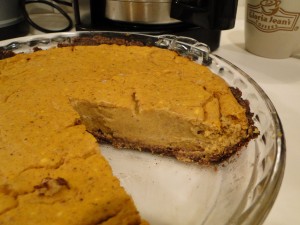To Every Thing (turn, turn) there is a season (turn, turn)...
To everything there is a purpose!
So you are asking me, what real purpose could ice cream possibly have? Ready for a story? Sit down, let me tell you a story. Stories are the fibers that weave us together as community!
The recent Indian Summer has been a joy. I love warm fall days with bright blue skies. 75 degrees is about as perfect as it gets. This is still good swimming weather!
The sudden Autumn heat made me think some ice cream would be a good idea. Now I confess, I am not a big ice cream eater, maybe once or twice a summer. Ice cream was just appealing to me. My sister was visiting during this fine summery fall weather. After a hike in Stone Valley, I threw out a "Hey, let's get some ice cream" to her and my kids.
Mistake #1, I opened my big mouth before I thought about it and they (my 2 boys and my sister) were not going to let me off the hook on this one.
So, off to the Potsdam Food Coop a shopping we will go! (I had my way and organic, quality ice cream was on the shopping list!)
I suggested we try a pint of The Three Twin's Dad's Cardamom flavor ice cream. Somehow we left with that, the Sea Salt Caramel, AND the 3 pint container of the Alden's Organic Vanilla ice cream. My sister wanted to get the Three Twins Milk Coffee ice cream as well.
Someone had to be the voice of reason... 5 pints of ice cream for 4 people? Seriously? They listened, we skipped the coffee ice cream!
So, are you wondering about the whole "ice cream's purpose" thing here? Let me just say this:
Ice cream in your freezer is like the canary in the coal mine. It is the perfect way to gauge the correct temperature setting of your freezer. Ice cream too hard to eat? The freezer needs to be turned down, meaning the temperature inside the freezer needs to be raised a bit. Ice cream too mushy and runny? Time to set the temperature in your freezer a tad bit lower.
I recommend any freezer temperature changes be carried out in tiny, little increments and tested frequently. It is totally acceptable to leave a spoon right on top of the freezer, you know, just in case an emergency check is required.
Caution: Do not ever hide the spoon inside the freezer. Way too cold in the mouth!
Action to take: Head on over to the Potsdam Coop or your local natural food store that carries quality, organic ice cream and get some now... before the Indian Summer escapes us!
PS By the way, I do recommend the Milk Coffee ice cream. It is divine! The cardamom was exquisite! Vanilla is simply scrumptious and the Sea Salted Caramel is a must try. You decide!
Tell me your ice cream story!
PPS Remember to join the Local Living Venture and I as we rock your world (no, not with ice cream) with vibrant health and healing messages! Whole Health & Healing Academy continues this Thursday evening with Natural Foods Know How. See you there!









